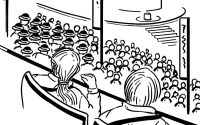West Maui Had Been Warned of Wildfires Risk, Report Says
A hazard mitigation plan prepared for Maui County in 2020 said that the area of West Maui — where Lahaina is located — had the highest annual probability for wildfires of all the communities in the county.
The document listed West Maui as having a “highly likely” probability, or a more than 90 percent chance, of wildfires each year on average. That is far above the “likely” ratings — 10 percent to 90 percent — that half a dozen other Maui communities received in the report. The island of Lanai in Maui County received the lowest assessment, a “possible” probability of 1 percent to 10 percent.
The plan, prepared by Jamie Caplin Consulting, a Massachusetts-based firm that specializes in natural hazard mitigation, did not specifically address why West Maui was at such an elevated risk. But it did offer some broader reasons for the probability of future wildfires in the county that turned out to be somewhat prophetic about the current situation on the island.
“Dry, windy conditions with an accumulation of vegetative fuel can create conditions for a fire that spreads quickly,” the document, which runs more than 1,000 pages, said.
“Wildfires could become more frequent in the future as drought conditions become more frequent and more intense with climate change,” it went on to say.
The report stated that 80 wildfires directly affected the county between 1999 and 2019 — an average of about four fires each year. The largest fire to burn in Maui County, it said, was the one in Kaunakakai in 2009 that scorched more than 8,358 acres on the island of Molokai.
“Most of the county is highly vegetated,” the document pointed out. “Some areas of the county have steep slopes, which are particularly vulnerable to wildfires, especially leeward slopes which do not receive moisture brought by trade winds.”
As for West Maui, the report painted a picture of a demographic particularly vulnerable to the ravages of wildfires.
It said West Maui had the highest rate of non-English speakers in the county — nearly 6 percent.
“This may limit the population’s ability to receive, understand and take expedient action during hazard events,” the plan states.
What’s more, the report said that West Maui had the county’s second-highest rate of households without a vehicle — almost 7 percent — and the highest density of multiunit housing in the county — almost 40 percent.
The report identified 50 strategies for the county to take to lessen the impact of natural hazards. For example, one of them called for the county to “establish an alternative route to and from West Maui for use during disasters.”


